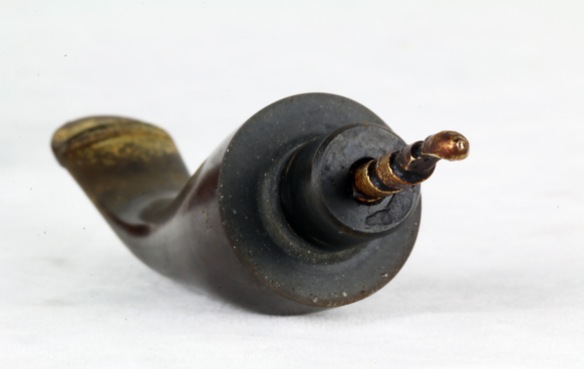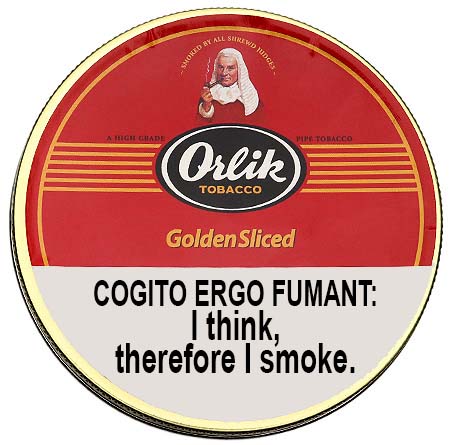113. Documenting A Killarney Natural 999 John Bull
 John Bull 999s are always a cause for celebration to me, and this one especially so, because it’s one of Peterson’s first documented and stamped “Natural” releases—the Killarney Natural, so when I saw this one recently on eBay, I wanted to investigate a little further:
John Bull 999s are always a cause for celebration to me, and this one especially so, because it’s one of Peterson’s first documented and stamped “Natural” releases—the Killarney Natural, so when I saw this one recently on eBay, I wanted to investigate a little further:
 The Killarney line is first mentioned on the Rogers Imports page of the 1949 RDTA catalog, then in the 1951 Genin, Trudeau & Co. catalog. But the first sighting of a 999 John Bull in the line is found in the 1953 Rogers catalog:
The Killarney line is first mentioned on the Rogers Imports page of the 1949 RDTA catalog, then in the 1951 Genin, Trudeau & Co. catalog. But the first sighting of a 999 John Bull in the line is found in the 1953 Rogers catalog:
 As you can see, it was available in both the traditional plum stain we’ve also come to associate with another Rogers line, the Shamrock, but the Killarney also came in a higher, natural grade. What’s fascinating to me is the stinger. I couldn’t draw through the air hole at all, so clogged had it become with tars. When the pipe was on the work bench, my thought was to carefully clean and remove it, then restore it and give it a smoke and experience what it was like to smoke this pipe 70 years ago. I let just the stinger soak in ice water for a spell, hoping that would contract it and make it easier to remove, but had no luck. I thought I was gently turning it with the jeweler’s liars and it just snapped in two. So much for reliving the past!
As you can see, it was available in both the traditional plum stain we’ve also come to associate with another Rogers line, the Shamrock, but the Killarney also came in a higher, natural grade. What’s fascinating to me is the stinger. I couldn’t draw through the air hole at all, so clogged had it become with tars. When the pipe was on the work bench, my thought was to carefully clean and remove it, then restore it and give it a smoke and experience what it was like to smoke this pipe 70 years ago. I let just the stinger soak in ice water for a spell, hoping that would contract it and make it easier to remove, but had no luck. I thought I was gently turning it with the jeweler’s liars and it just snapped in two. So much for reliving the past!
 If you enlarge the picture to full frame on your computer, you can see that the stinger is glued rather than threaded into the traditional graduated-bore P-Lip mouthpiece—interesting, right? (I’m sure Charles Peterson would’ve rolled over in his grave if’d heard about it.)
If you enlarge the picture to full frame on your computer, you can see that the stinger is glued rather than threaded into the traditional graduated-bore P-Lip mouthpiece—interesting, right? (I’m sure Charles Peterson would’ve rolled over in his grave if’d heard about it.)
 Also note the “K” stamp. Apart from the oxidized mouthpiece and a bit of scuffing on the rim and light carbon in the bowl, this was an amazingly clean pipe. The stamps on both sides of the shank are among the sharpest I’ve seen in any Peterson.
Also note the “K” stamp. Apart from the oxidized mouthpiece and a bit of scuffing on the rim and light carbon in the bowl, this was an amazingly clean pipe. The stamps on both sides of the shank are among the sharpest I’ve seen in any Peterson.
 The MADE IN IRELAND in a circle is indicative both of its being a Rogers Imports pipe (the shape isn’t found in the Canadian GT&C catalog) and being of a better grade. There are a few tiny fills, notably one on the bowl rim, but I think what qualified this bowl for the Killarney Natural line was the fantastic grain.
The MADE IN IRELAND in a circle is indicative both of its being a Rogers Imports pipe (the shape isn’t found in the Canadian GT&C catalog) and being of a better grade. There are a few tiny fills, notably one on the bowl rim, but I think what qualified this bowl for the Killarney Natural line was the fantastic grain.
 The Killarney Natural line last appeared in the 1957 Rogers Imports catalog, which makes dating this piece a cinch—it had to appear not much before 1953 and not much later than 1957.
The Killarney Natural line last appeared in the 1957 Rogers Imports catalog, which makes dating this piece a cinch—it had to appear not much before 1953 and not much later than 1957.
There wasn’t much to the restoration that you haven’t already seen and read about here or on other sites dozens of times. I’m a recent convert to the joys and beauties of natural (un)finished pipes, so while I sanded the bowl with pads from 400 to 12,000 grit, I didn’t follow with carnauba, but with a very, very light coat of olive oil, which I laid on gently with my fingers and rubbed off with a micromesh towel immediately, leaving a soft, smooth matte finish.
 I would like to know from other restorationists how you preserve the vulcanite stamping while simultaneously removing oxidation–in other words, how do you keep from sanding it off? And how do you apply a new coat of paint to the letter—in this case, the K. Mine came out pretty well if you look closely at the photo at the very top of the post, but there’s got to be a better method than toothpick, acrylic paint and tissue.
I would like to know from other restorationists how you preserve the vulcanite stamping while simultaneously removing oxidation–in other words, how do you keep from sanding it off? And how do you apply a new coat of paint to the letter—in this case, the K. Mine came out pretty well if you look closely at the photo at the very top of the post, but there’s got to be a better method than toothpick, acrylic paint and tissue.
NEXT: A Brief History of Peterson’s 999
 TIN TALK #10: Charles Peterson may not have
TIN TALK #10: Charles Peterson may not have
used Latin to say it.
